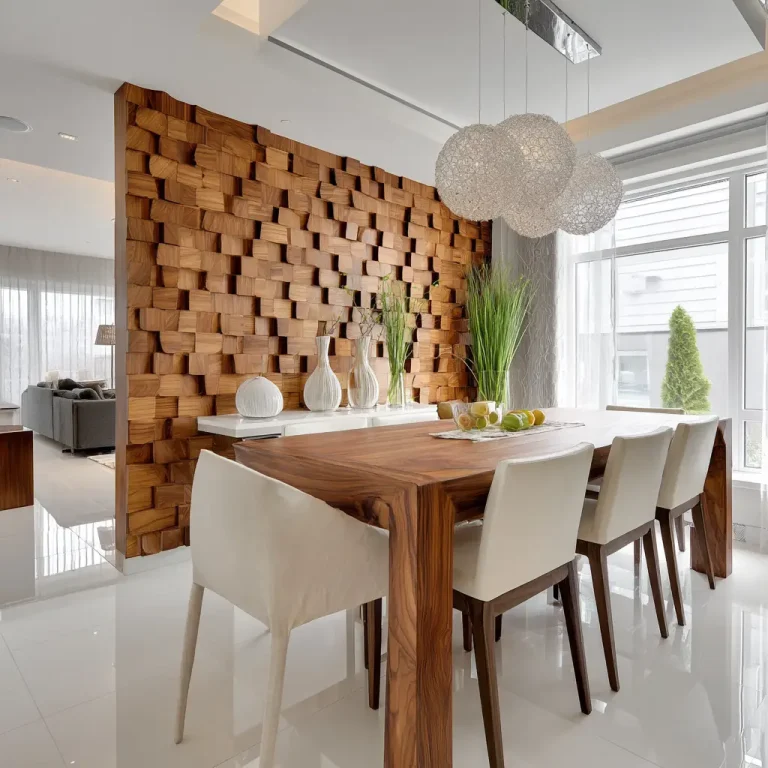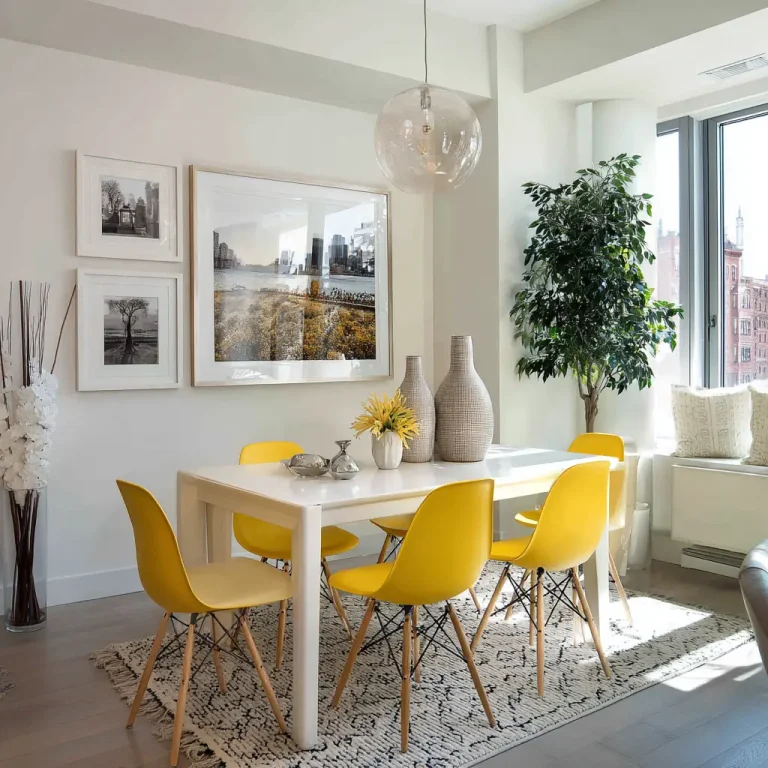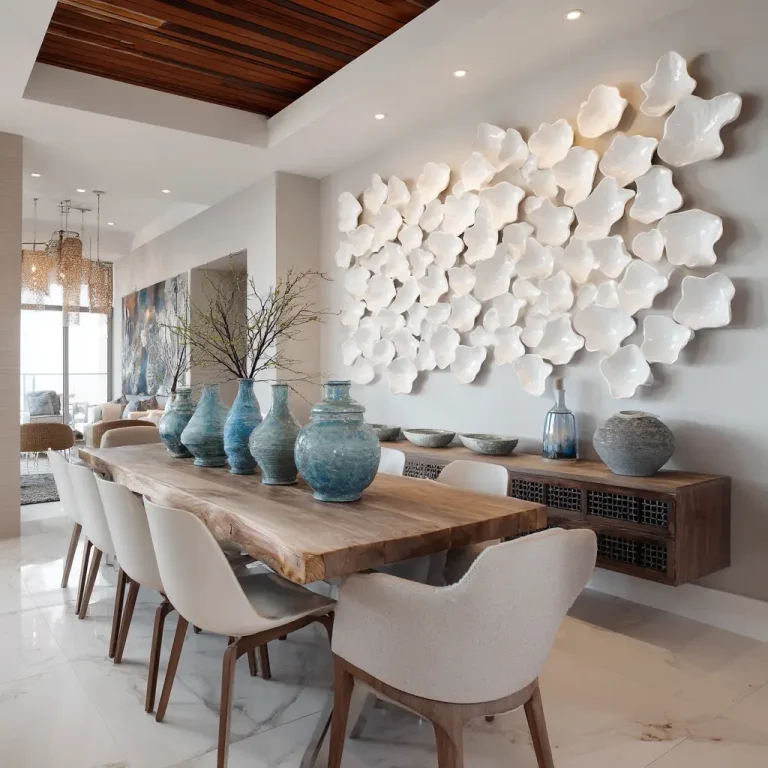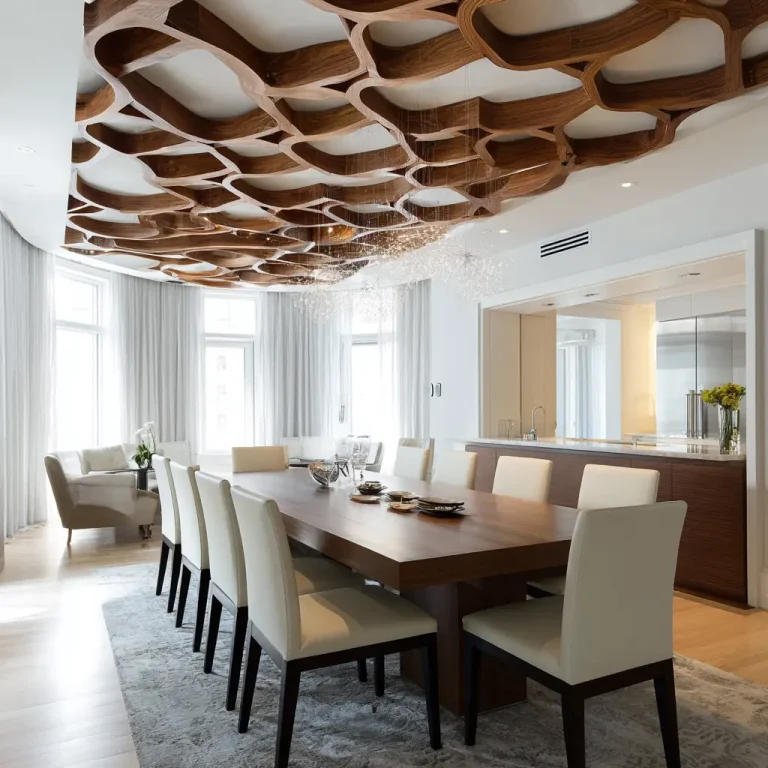18 Japandi Dining Room Design Ideas to Inspire Your Space
Japandi style has taken the interior design world by quiet storm—and for good reason. It’s where the warmth of Scandinavian simplicity meets the elegance and precision of Japanese minimalism. If you’re looking to create a dining room that feels serene, functional, and effortlessly beautiful, Japandi design might be your ideal match.
Here are 18 Japandi dining room design ideas that can help you bring this calming aesthetic into your home.
1. Neutral Color Palette
A hallmark of Japandi is its earthy, neutral tones. Think whites, beiges, soft greys, and muted browns. These colors help establish a peaceful, grounded atmosphere ideal for slow, intentional dining.

2. Wooden Dining Table with Clean Lines
Choose a dining table made of natural wood like oak or ash. A low-profile table with straight, clean lines anchors the room in simplicity without feeling stark.
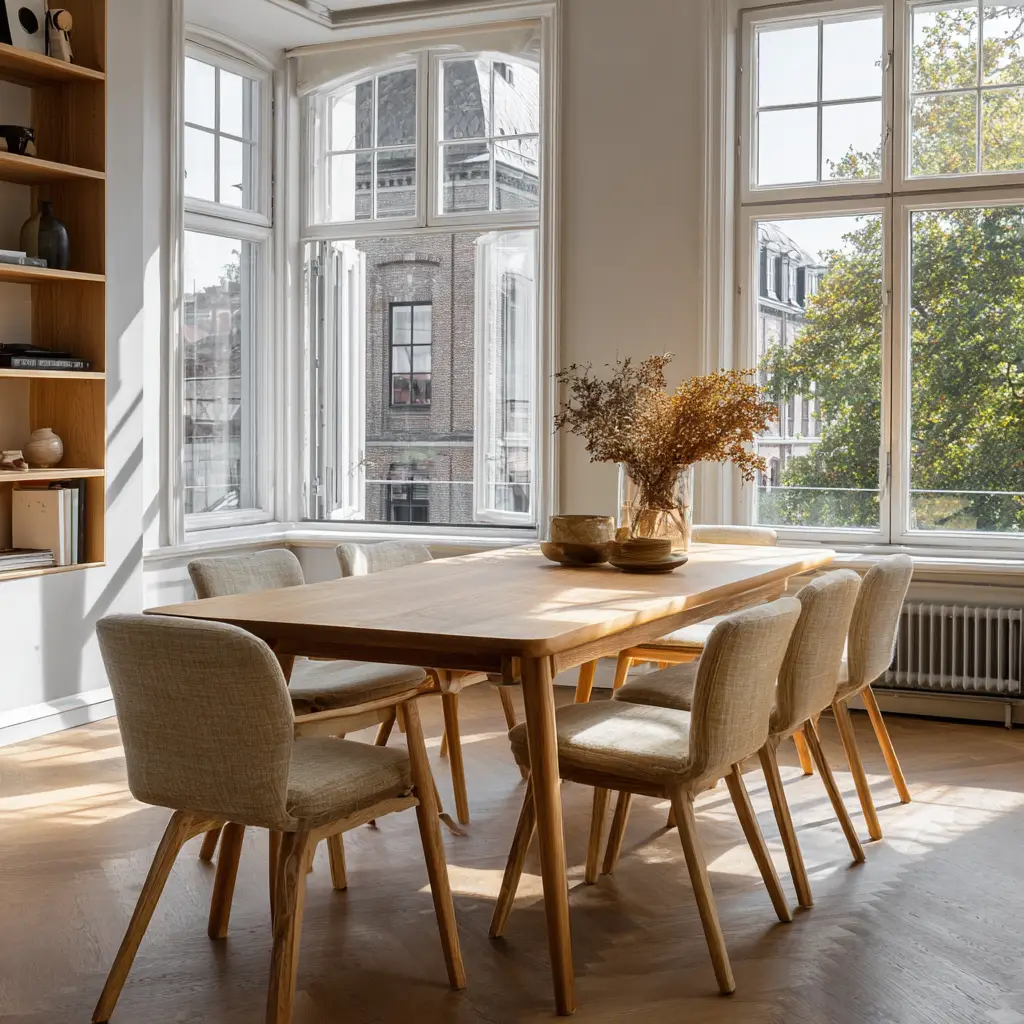
3. Mix Scandinavian and Japanese Chairs
Combine classic Scandinavian-style chairs with Japanese-inspired seating like low stools or even floor cushions. This fusion adds character and subtle contrast.
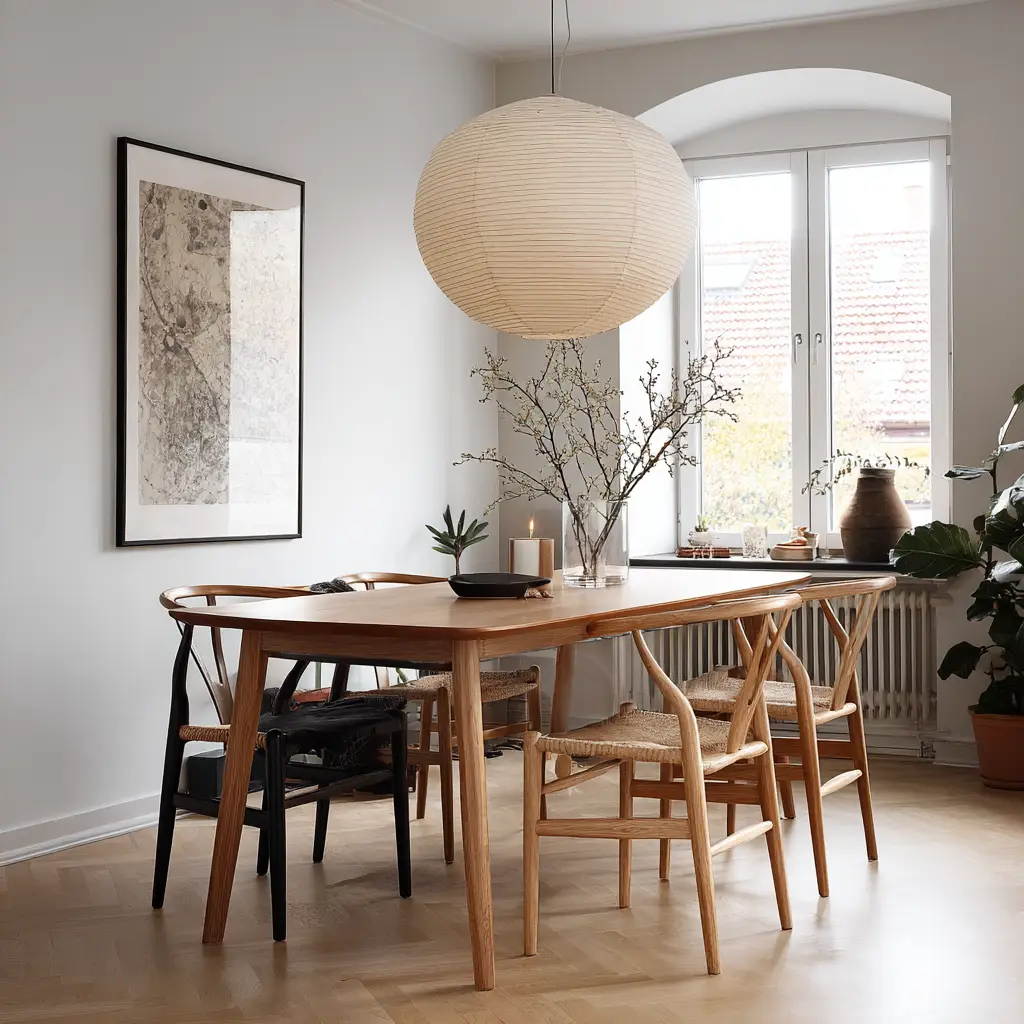
4. Embrace Imperfection with Wabi-Sabi Decor
Japandi design often incorporates the Japanese concept of wabi-sabi, the beauty in imperfection. A hand-thrown ceramic bowl or a slightly asymmetrical vase adds authenticity.

5. Use Soft Lighting
Lighting should be warm and soft. Use pendant lights made of natural materials like paper, rattan, or linen. Avoid harsh white LEDs—warm bulbs create a cozy mood.

6. Incorporate Tatami-Inspired Mats
Layering natural fiber rugs like jute or sisal under the dining table can mimic the look of traditional Japanese tatami mats while adding texture.
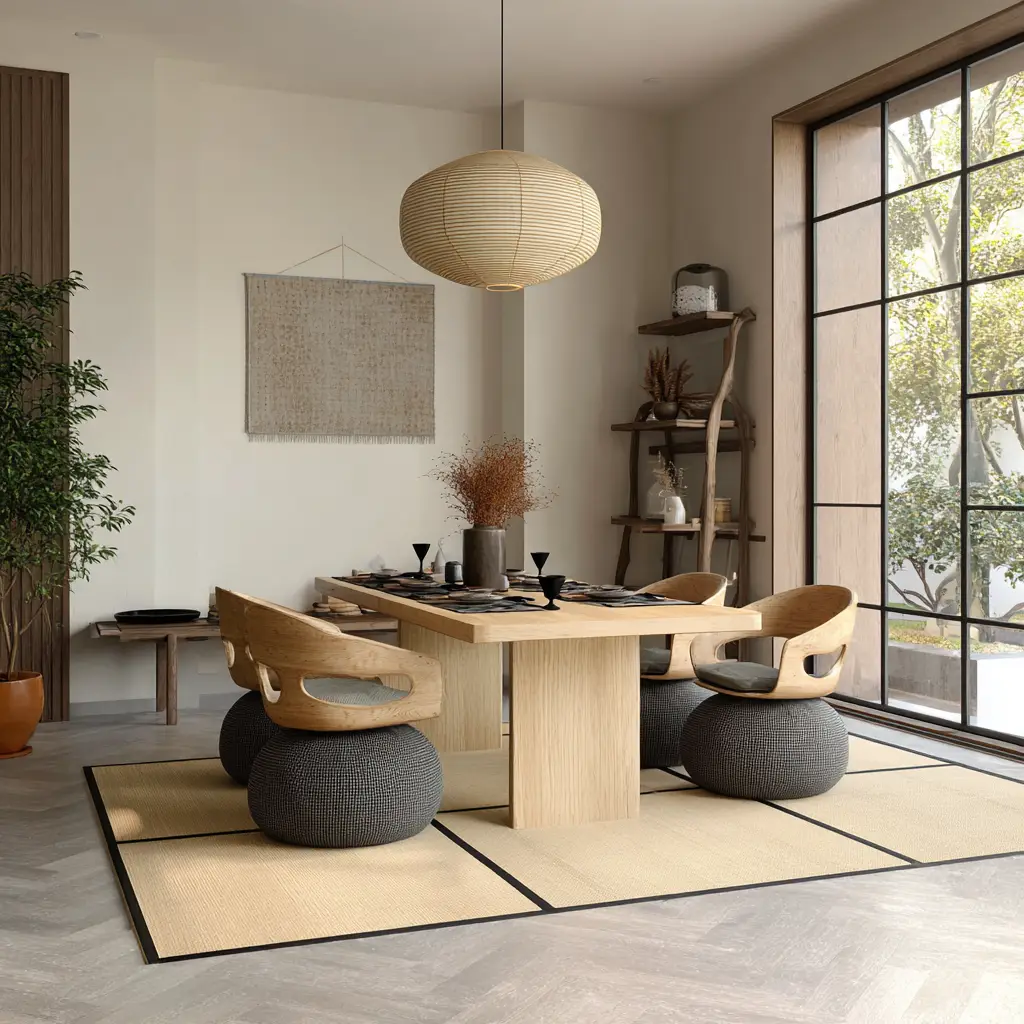
7. Built-In Storage for a Minimal Look
Japandi thrives on minimalism. Built-in storage or minimalist sideboards keep clutter at bay and maintain the room’s serene feel.
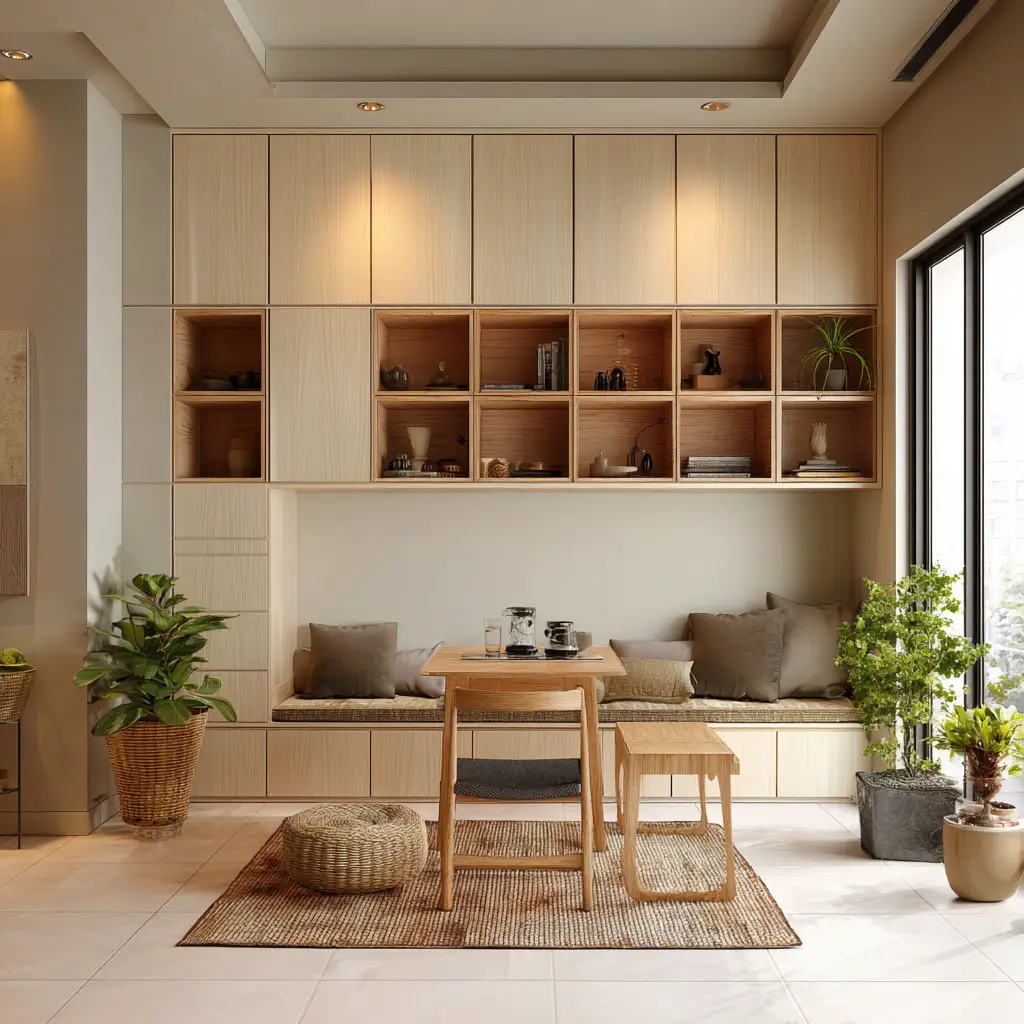
8. Black Accents for Contrast
Use black in small doses—like light fixtures, chair legs, or cutlery—to add visual depth without overpowering the calm color scheme.
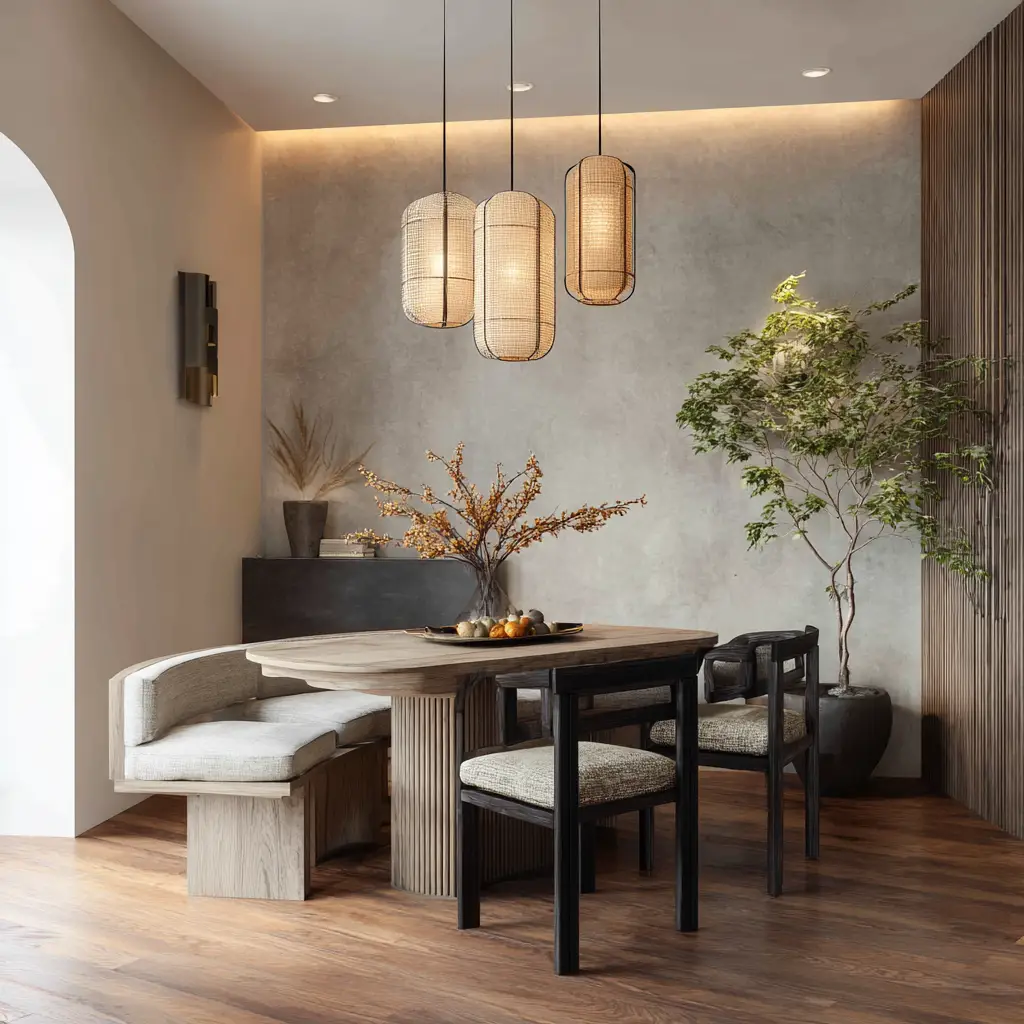
9. Indoor Plants for Life and Balance
Greenery softens the minimal lines of Japandi interiors. Choose low-maintenance indoor plants like snake plants, rubber trees, or bonsai for a harmonious touch.
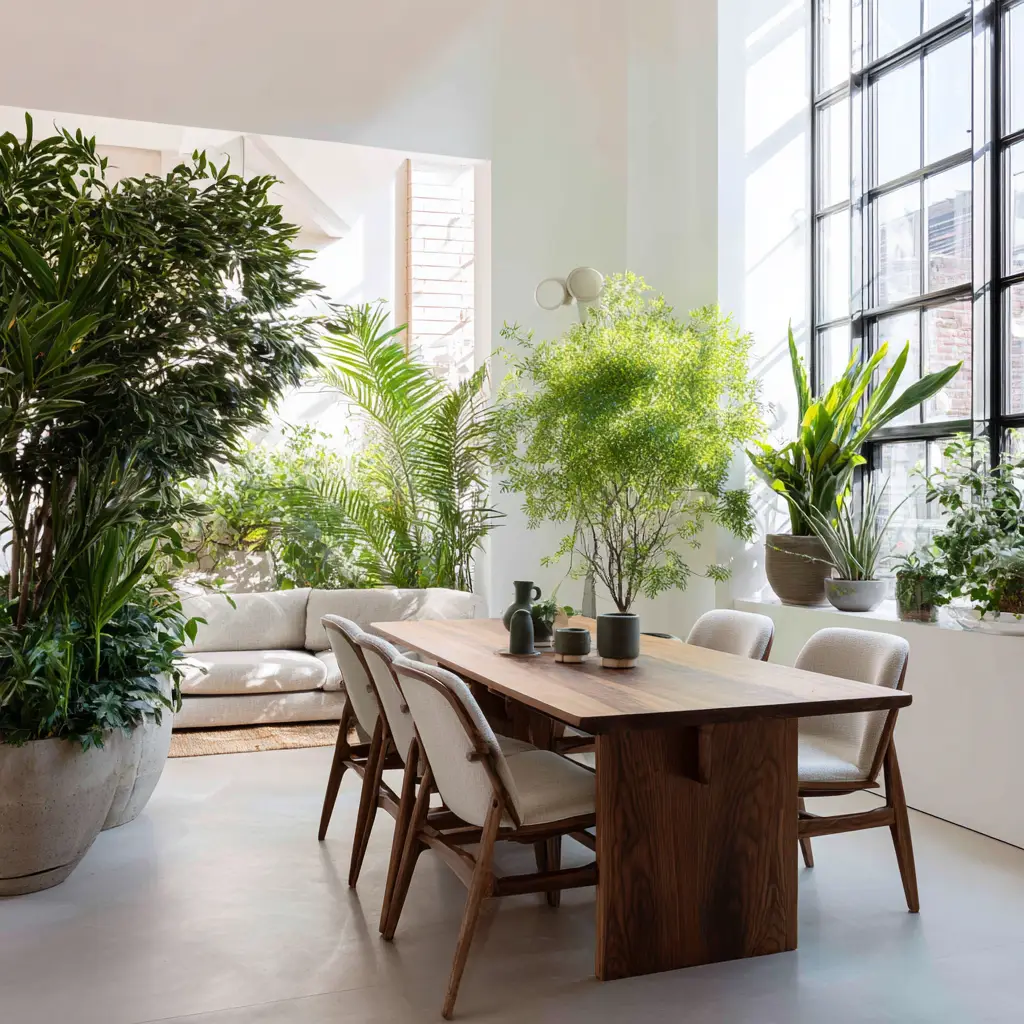
10. Sliding Doors or Screens
Incorporate Japanese-style sliding doors or wooden screens to subtly divide spaces or add architectural interest.
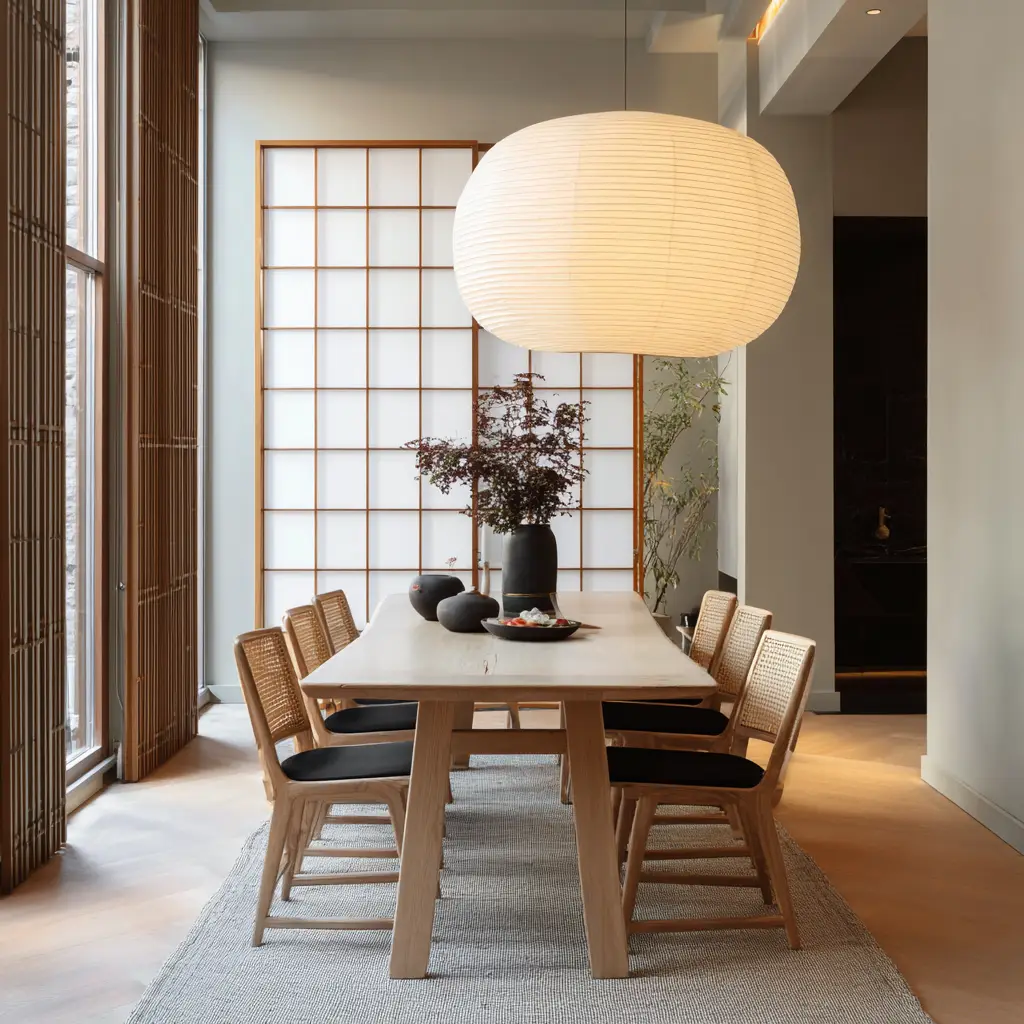
11. Handmade Ceramics on Display
Functional art like handmade plates, bowls, and teapots can be both practical and decorative. They bring a human touch to the space.
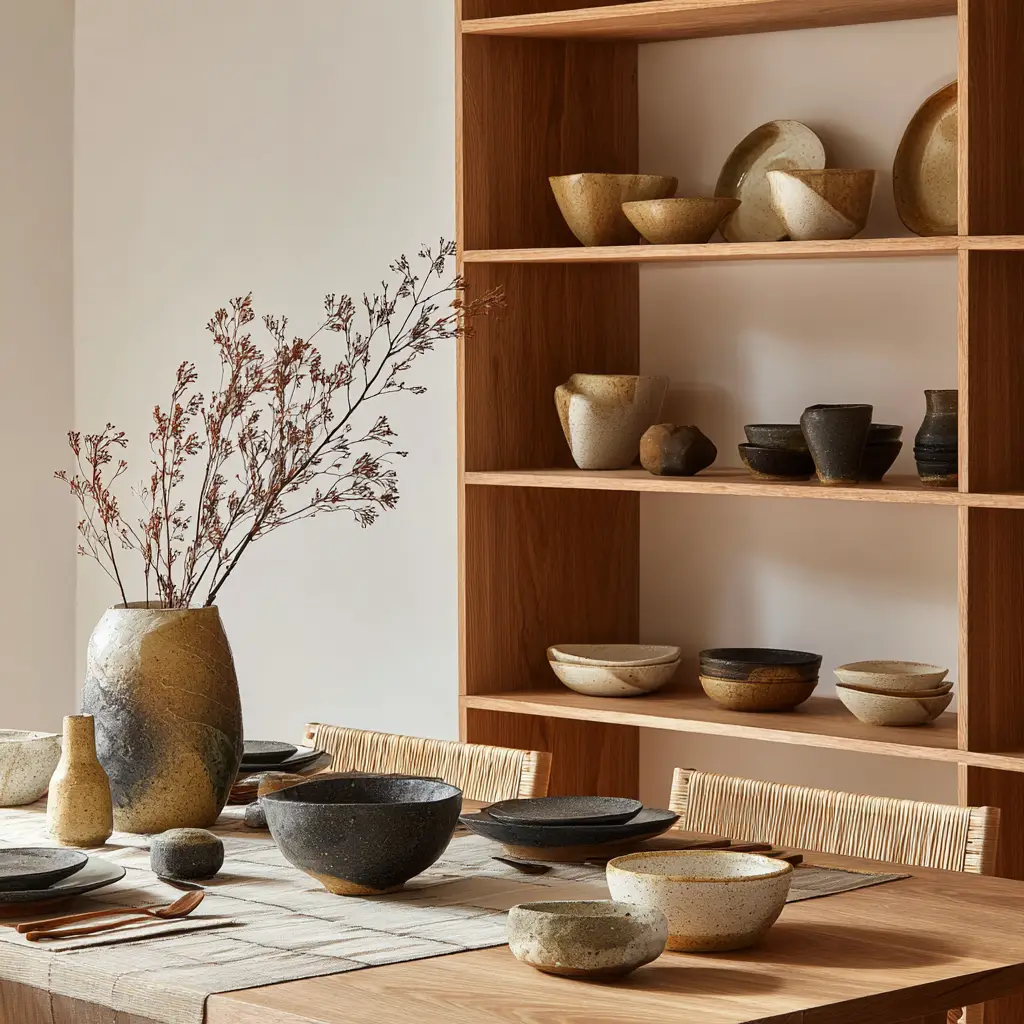
12. A Statement Pendant Light
Choose one standout light fixture made from natural materials. A bamboo or paper pendant can act as a focal point without overwhelming the space.
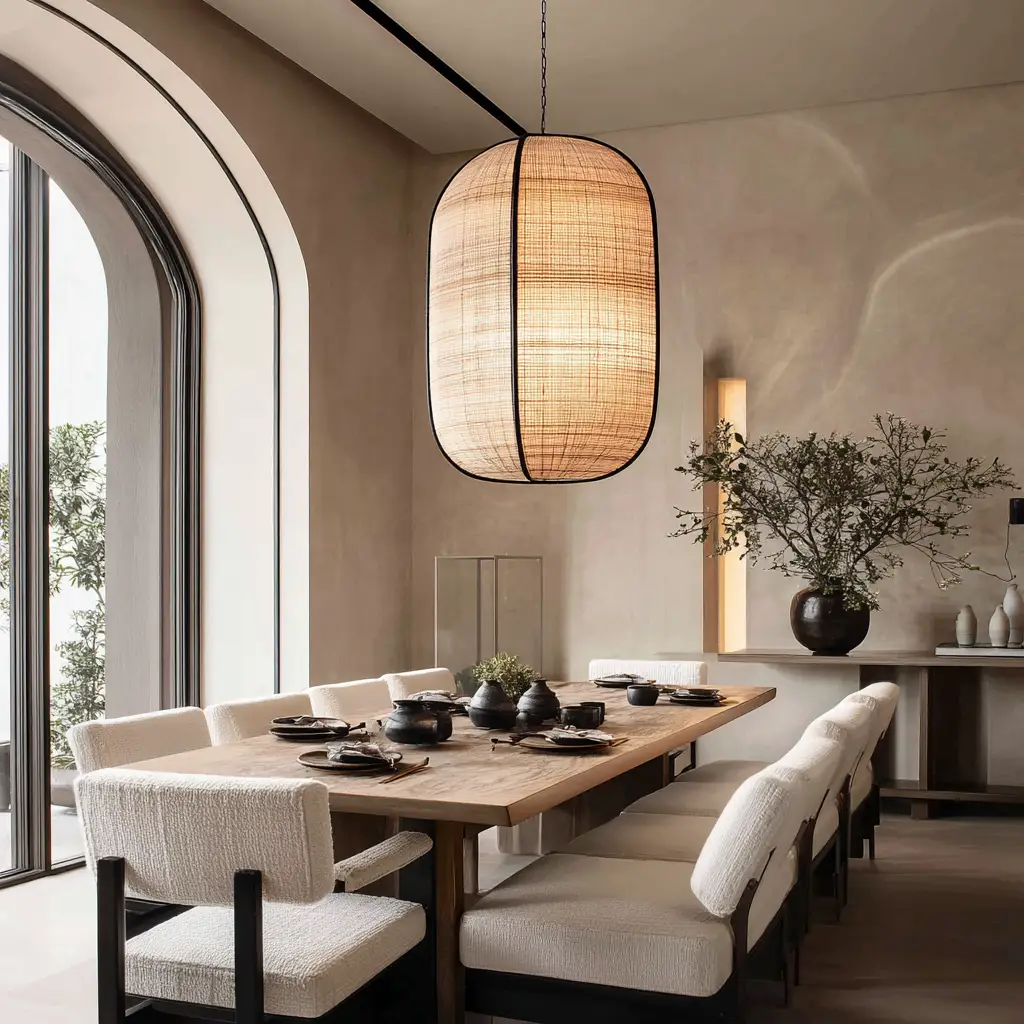
13. Layered Textures
Keep the palette simple, but layer textures—linen curtains, a wool runner, a wooden bowl—to add richness and prevent flatness.
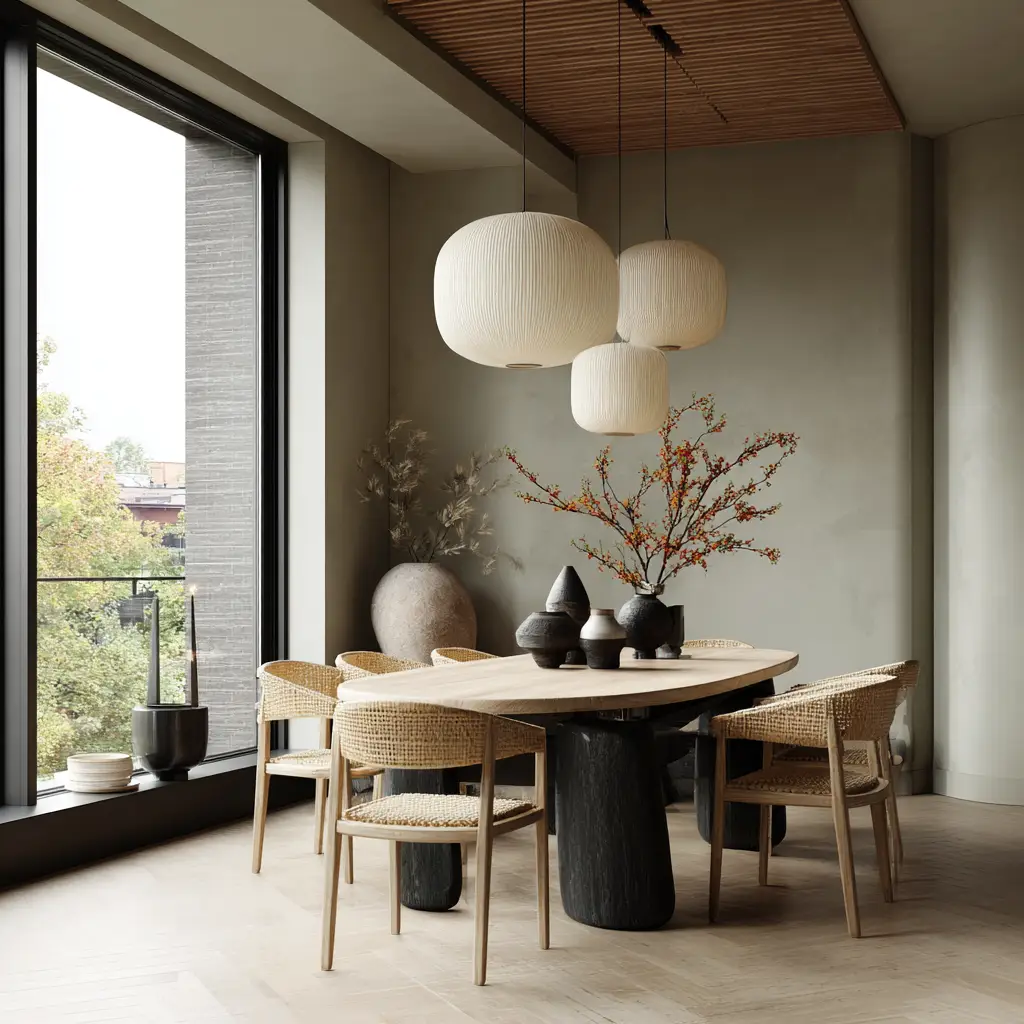
14. Low-Profile Furniture
Opt for furniture that sits closer to the ground. This brings in a Japanese sensibility and creates a cozy, grounded environment.
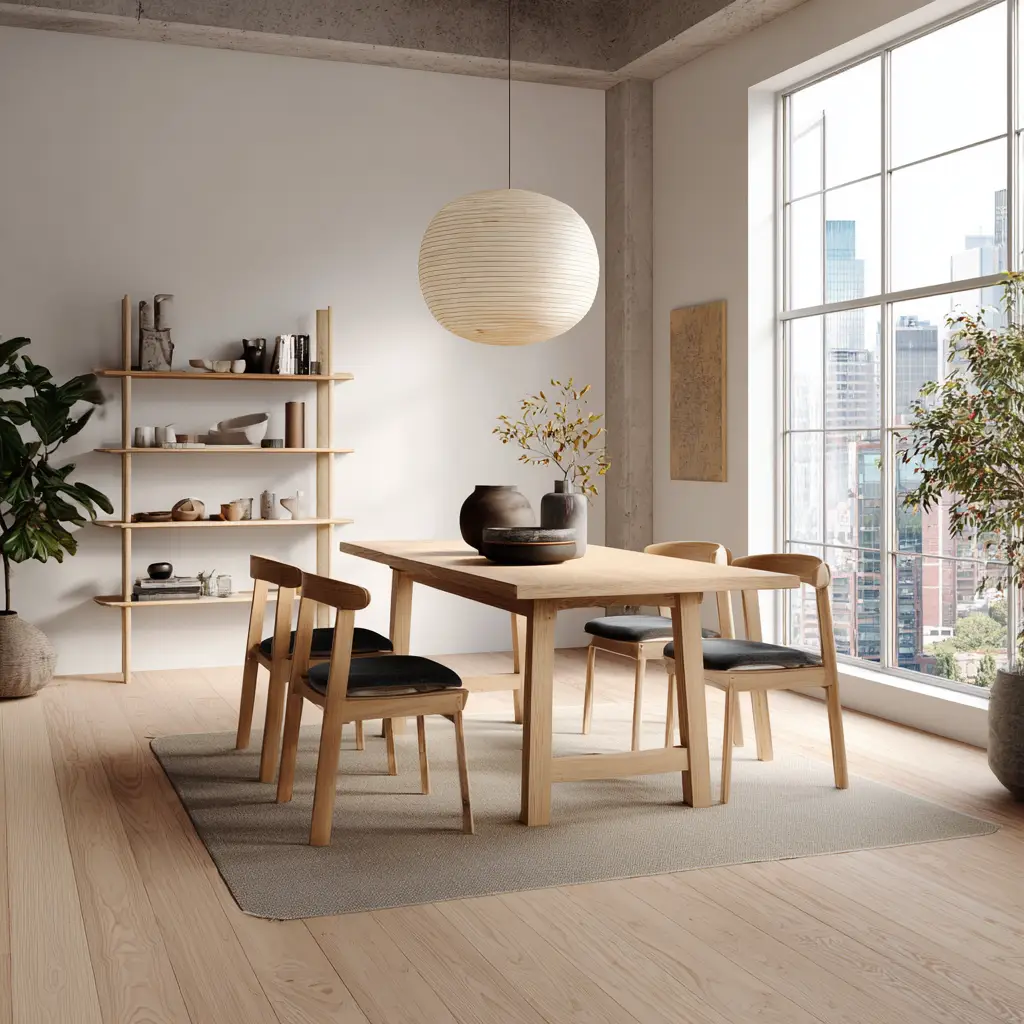
15. Open Shelving with Intention
Use open shelves sparingly, displaying only a few curated items. A teapot, a few ceramic plates, or a stack of linen napkins can be enough.
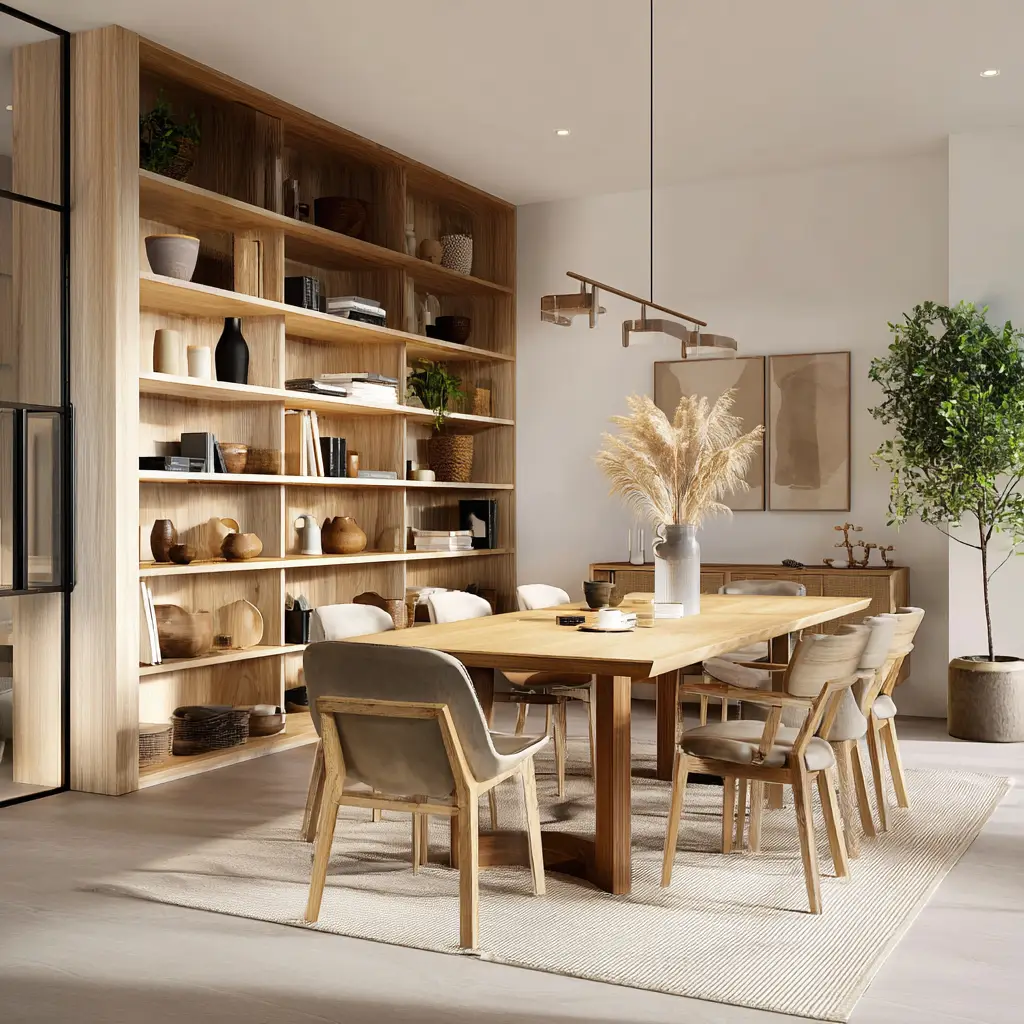
16. Soft Fabrics for Comfort
Linen seat cushions or throws add softness to wood-heavy spaces and invite people to linger at the table longer.
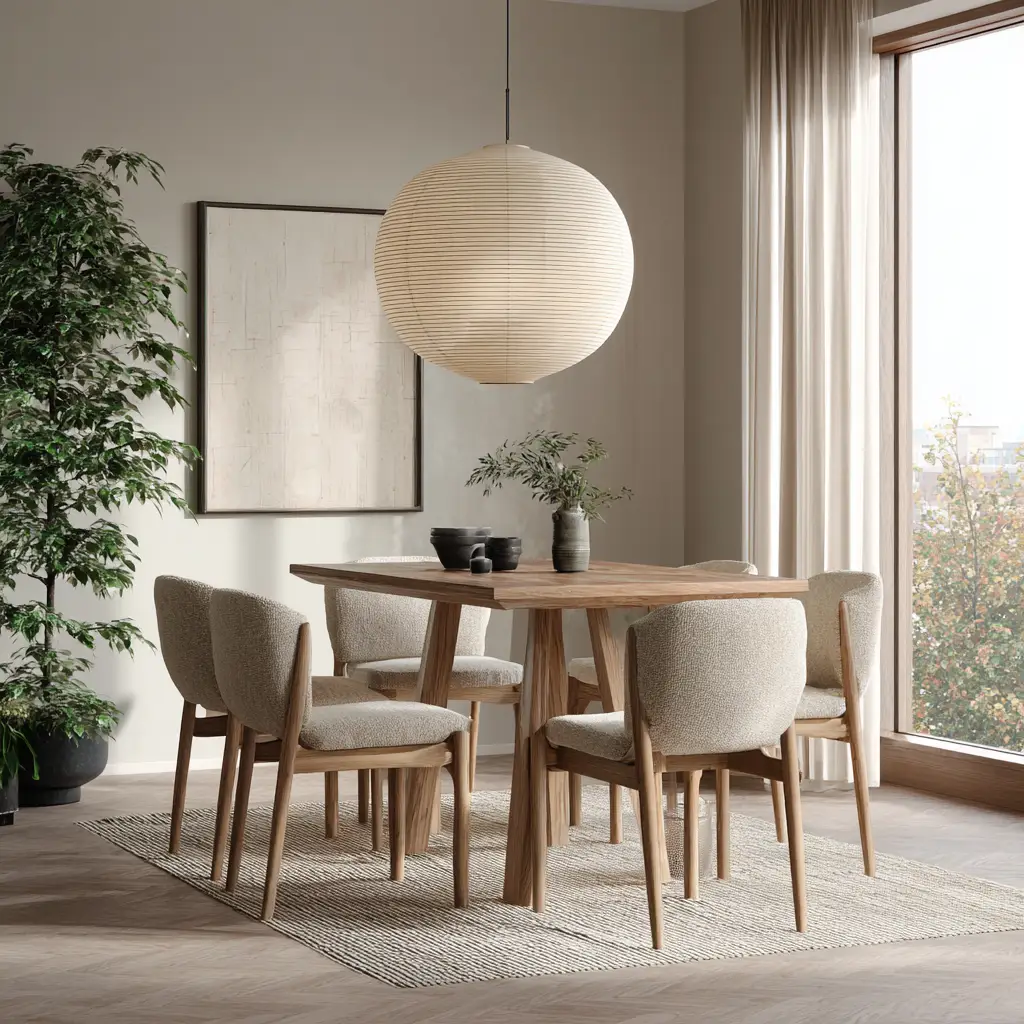
17. Use Natural Light to Your Advantage
Japandi design embraces natural light. Keep window treatments light and airy, or skip them entirely if privacy isn’t an issue.
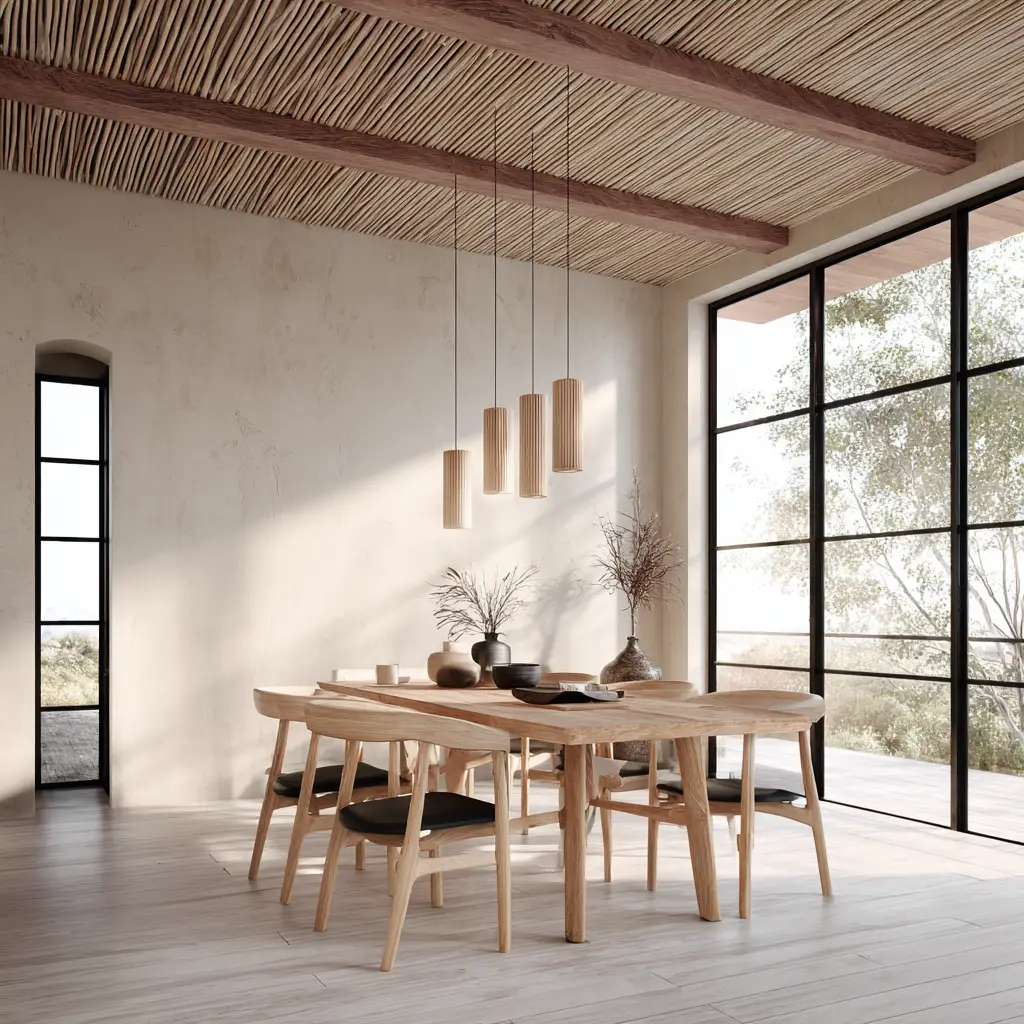
18. Keep Decor Minimal but Meaningful
Don’t over-decorate. One branch in a vase or a framed piece of Japanese calligraphy can speak volumes in a Japandi dining room.
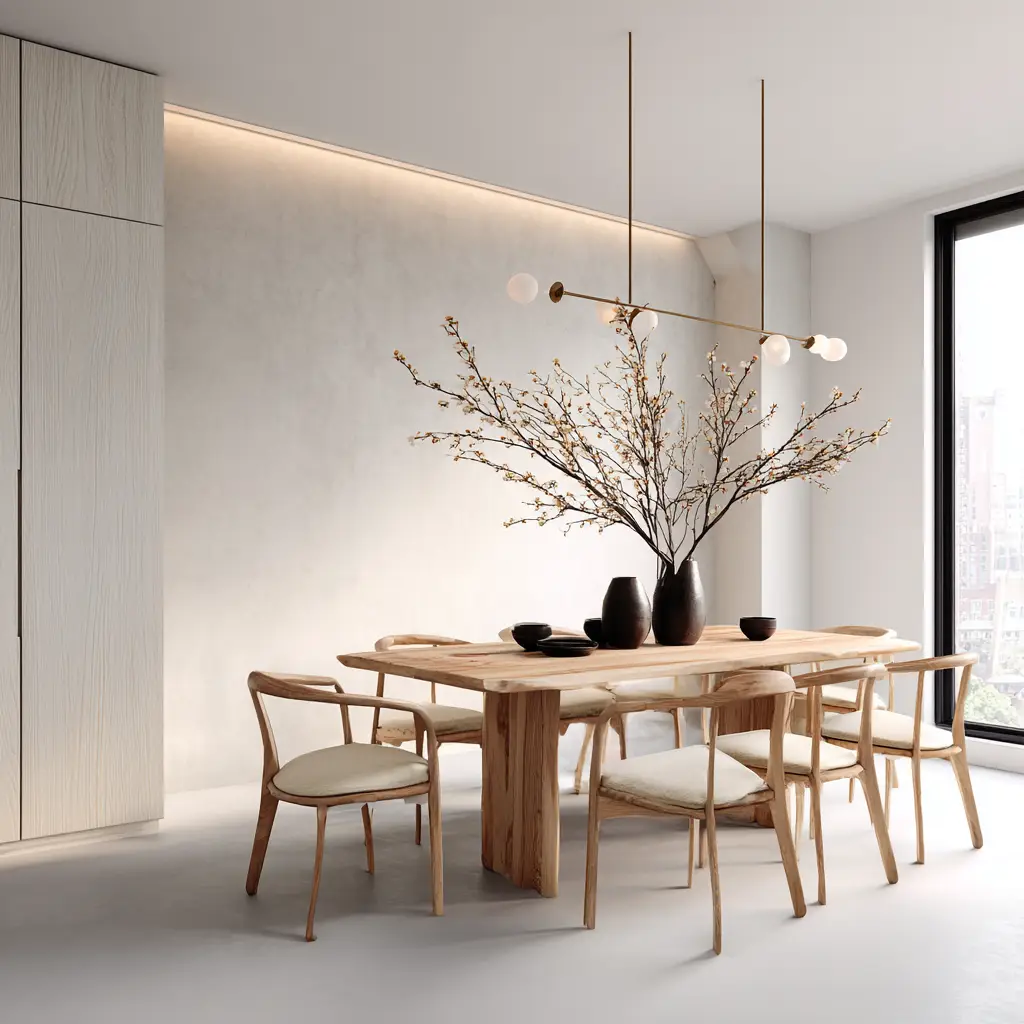
Frequently Asked Questions
What is the main difference between Japandi and minimalism?
While both styles prioritize simplicity, Japandi adds warmth through natural textures and a blend of Japanese and Scandinavian cultural aesthetics. Minimalism can sometimes feel colder; Japandi is more human-centric and cozy.
Can I mix Japandi with other styles?
Yes, but be mindful. Japandi works well with other quiet, nature-inspired styles like modern rustic or organic modern. Avoid styles with excessive ornamentation.
Is Japandi expensive to implement?
Not necessarily. The focus on fewer, high-quality pieces means you can invest slowly. Handmade, natural items may cost more upfront but last longer and age beautifully.
What are the best materials for Japandi dining furniture?
Opt for natural woods (oak, ash, walnut), ceramics, linen, and rattan. These materials reflect both the Scandinavian and Japanese design ethos.
How do I make a small dining space feel Japandi?
Focus on keeping things minimal and light. Use multipurpose furniture, light wood tones, and mirrors to reflect natural light. Simplicity will make the space feel larger and more intentional.
Conclusion
Japandi dining room design is more than just a trend—it’s a philosophy of living. It’s about creating spaces that feel calm, intentional, and grounded in nature and tradition. With its focus on quality over quantity, warmth over clutter, and authenticity over flash, Japandi invites you to slow down and savor your space—and your meals.
